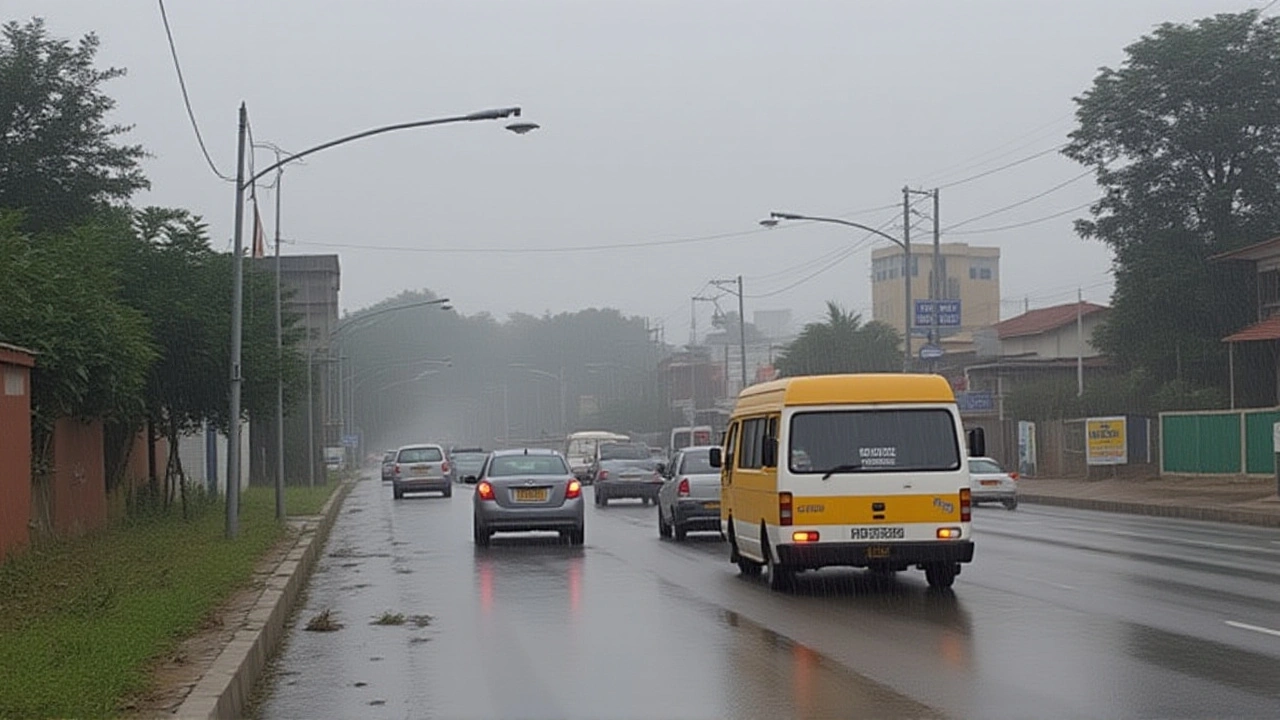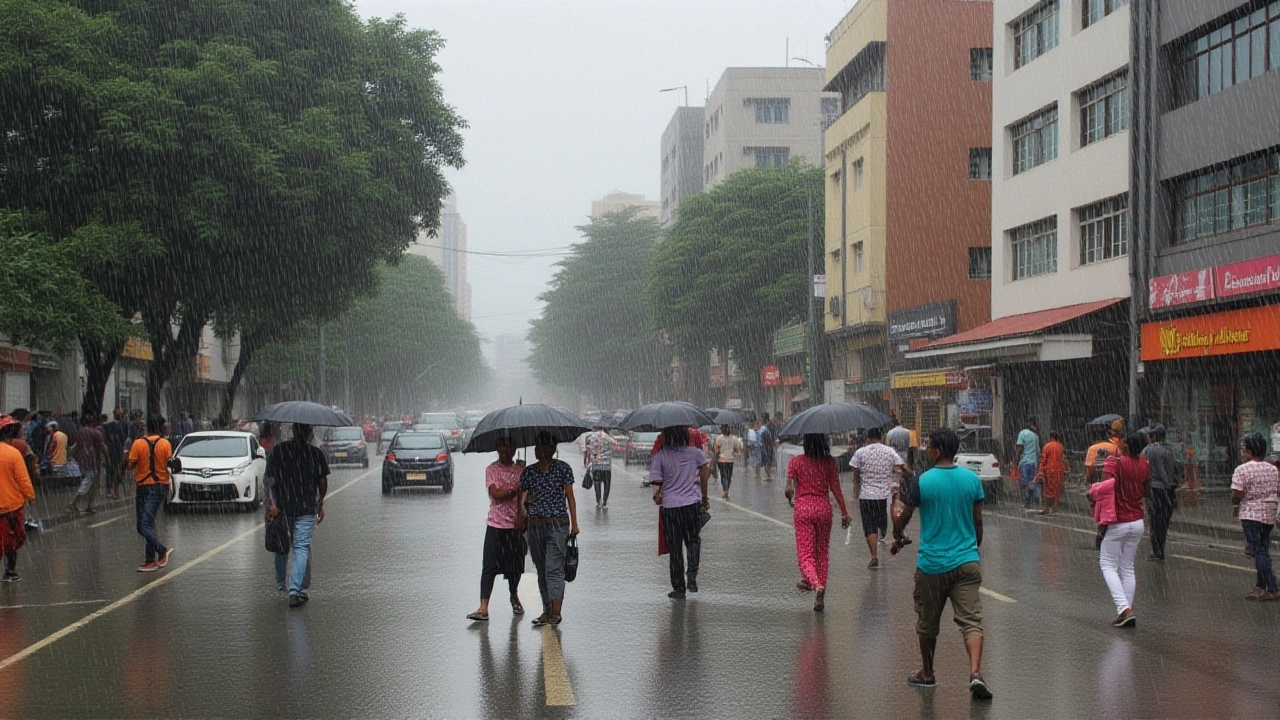When President William Ruto addressed the nation on December 12, 2024, he warned that Kenya was confronting record climate extremes that threatened food security, health and the economy. The warning came after the Kenya Meteorological Department released its State of the Climate Report 2024, confirming the hottest year on record and a stark split between flood‑ravaged western highlands and drought‑stricken eastern plains.
Why Kenya’s Weather Has Gone Off‑Script
The 2024 report highlighted two contrasting rain seasons. From March to May, the long rains batteried the western and central highlands, delivering up to 250 mm above‑average totals in places like Kisumu and Nakuru. The deluge triggered flash floods that swamped roads, knocked down schools and forced more than 100,000 households onto temporary shelters. Damage estimates in coastal counties alone topped KSh 400 million, according to the department’s post‑disaster assessment.
By contrast, the October‑December short‑rain window fell dramatically short. In eastern Kenya, rainfall was 35 % below normal, deepening a drought that doubled the number of people facing food insecurity—from roughly 1 million in July 2024 to 2.15 million by February 2025. Pastoralists in Garissa and Wajir reported livestock losses exceeding 20 % as pastures withered under relentless sun.
Regional Forecasts and the Role of Global Climate Patterns
The IGAD Climate Prediction and Applications Centre (ICPAC) had issued a seasonal outlook on August 20, 2024, from Nairobi, warning of drier‑than‑normal conditions across the eastern Horn of Africa for the October‑December period. Its models pointed to a strong negative Indian Ocean Dipole (IOD) index in October 2024, a pattern that typically suppresses moisture inflow from the Indian Ocean.
Coupled with the emergence of La Niña in the same month, the IOD created a perfect storm for below‑average rains. The combination meant that eastern Kenya, southern Ethiopia, much of Somalia and parts of central Tanzania faced the highest probability of severe deficits, while western pockets—including north‑west Kenya, western Uganda and south‑eastern South Sudan—were slated for above‑average precipitation.
Ground‑Level Impacts: Health, Education and Energy
Public health officials sounded alarms as disease outbreaks surged. The Ministry of Health recorded a 27 % rise in cholera cases in May, alongside spikes in malaria, dengue and leishmaniasis, all linked to stagnant flood waters and weakened immunity from malnutrition.
Schools were not spared. In the flood‑hit districts of Busia and Siaya, over 250 primary schools were submerged for weeks, disrupting learning for an estimated 150,000 children. In drought‑affected eastern counties, teachers struggled to keep classes running as students skipped school to fetch water.
On the energy front, the contrast in rainfall produced a mixed bag. Hydropower generation at the Seven Forks scheme rose 12 % in 2024 thanks to swollen reservoirs, easing pressure on the national grid and shaving off roughly KSh 1.5 billion in thermal‑fuel costs. Yet the same volatile climate threatens future reliability, prompting the Ministry of Energy to underscore the need for diversified renewable sources.
What the Numbers Tell Us: A Data‑Driven Snapshot
- Temperature: 2024 average temperature was 0.6 °C above the 1981‑2010 baseline, the highest on record.
- Rainfall variance: Western highlands received up to 250 mm excess, while eastern plains logged deficits of 120‑150 mm during the short‑rain season.
- Food insecurity: 2.15 million people (≈4.5 % of the population) classified as highly food‑insecure by February 2025.
- Health: Cholera cases rose from 1,200 in January to 1,530 in June 2024.
- Economic loss: Direct damage from floods estimated at KSh 400 million; indirect agricultural losses projected at KSh 2.3 billion.

Expert Views on the Way Forward
"The climate signal is clear: we are entering an era of heightened variability," said Dr. Serah Kinyua, a senior climatologist at the Famine Early Warning Systems Network (FEWS NET). "Policy must pivot from reactive disaster relief to proactive climate‑smart agriculture and water‑resource management."
Local NGOs echo that sentiment. The Kenya Red Cross called for accelerated construction of flood‑resilient shelters, while the Pastoralist Association urged the government to expand early‑warning systems for drought‑related livestock disease.
Looking Ahead: 2025 Projections and Preparedness
Seasonal forecasts for early 2025 indicate warmer-than‑average temperatures across the country, with below‑average rains expected in the northeastern and coastal zones. The delayed onset of the short‑rain season could jeopardise planting schedules for second‑season cereals in the bimodal belt, particularly in Kitui and Machakos counties.
In Machakos County, the October‑December outlook warned of a late start—potentially between October 28 and November 8—with the season likely ending by early December. Farmers there are already considering drought‑tolerant varieties and supplemental irrigation to hedge against the forecasted shortfall.
Government ministries have launched a joint task force, blending the expertise of the Kenya Meteorological Department, Ministry of Agriculture and the National Drought Management Authority, to coordinate early‑warning dissemination, climate‑smart financing and community‑level training.
Key Takeaways
- The 2024 climate extremes underscore a growing gap between flood‑prone western regions and drought‑stricken east.
- Negative IOD and La Niña are driving the dry spell, while strong rainfall elsewhere boosts hydropower but cannot offset national agricultural shortfalls.
- Health, education and livelihoods are all feeling the pinch, demanding integrated policy responses.
- Experts call for a shift toward climate‑resilient farming, water‑management and disaster‑risk reduction.
- 2025 looks set to repeat, if not worsen, the pattern, making preparedness urgent.
Frequently Asked Questions
How will the 2025 rainfall forecast affect smallholder farmers in eastern Kenya?
With October‑December rains projected to be 30‑40 % below normal, many smallholders risk missing planting windows for second‑season maize and beans. Experts recommend early sowing of drought‑tolerant varieties and tapping into government irrigation subsidies to sustain yields.
What health risks are linked to the recent floods and droughts?
Stagnant floodwaters accelerate cholera and dengue transmission, while drought‑induced malnutrition weakens immunity, raising susceptibility to malaria and leishmaniasis. Health clinics are urging vaccination campaigns and rapid‑response treatment kits in affected districts.
Why did hydropower generation improve despite the overall dry trend?
The western highlands received above‑average rainfall during the long‑rain season, filling reservoirs such as the Turkwel and Masinga dams. This localized surplus boosted hydro output by roughly 12 % even as eastern basins remained arid.
What steps is the Kenyan government taking to address climate‑related food insecurity?
A multi‑agency task force is rolling out climate‑smart agriculture programs, expanding drought‑early‑warning systems, and allocating emergency funds for water‑truck distribution in the most vulnerable counties, including Garissa and Tana River.
How reliable are the seasonal forecasts from ICPAC for planning agricultural activities?
ICPAC’s models incorporate oceanic indices like IOD and ENSO, offering a 70‑80 % skill level for the Horn of Africa. While not foolproof, they provide valuable guidance for planting decisions and disaster preparedness, especially when combined with local observations from the Kenya Meteorological Department.


Author
Ra'eesa Moosa
I am a journalist with a keen interest in covering the intricate details of daily events across Africa. My work focuses on delivering accurate and insightful news reports. Each day, I strive to bring light to the stories that shape our continent's narrative. My passion for digging deeper into issues helps in crafting stories that not only inform but also provoke thought.